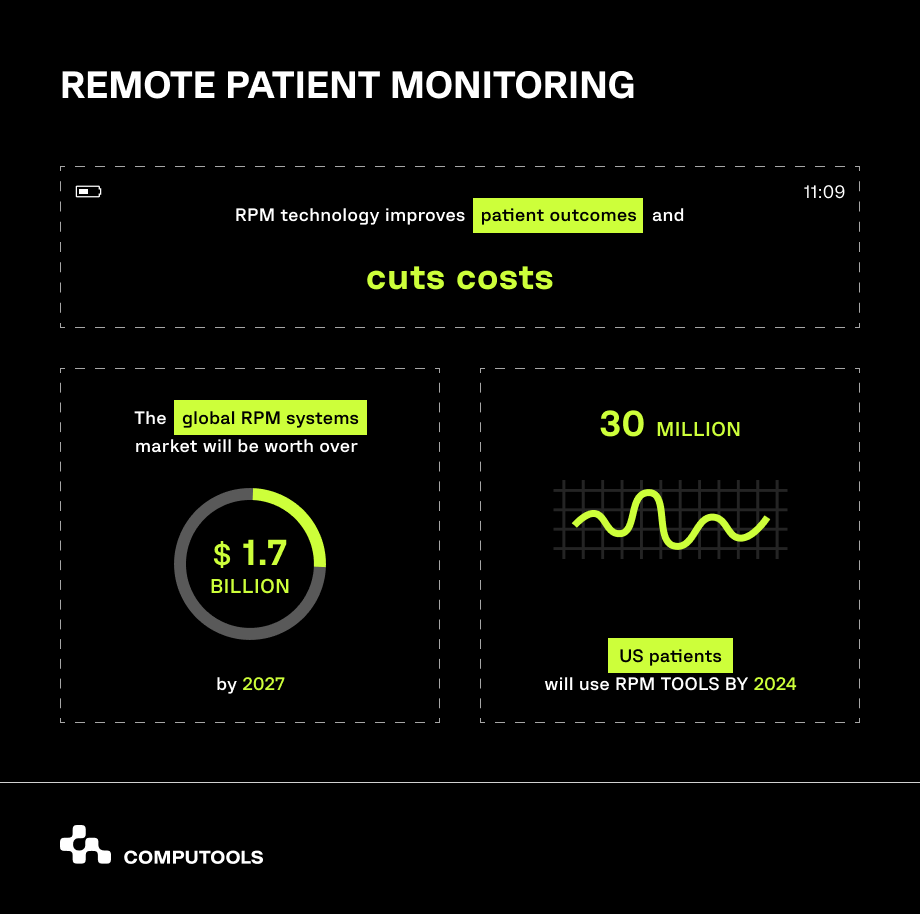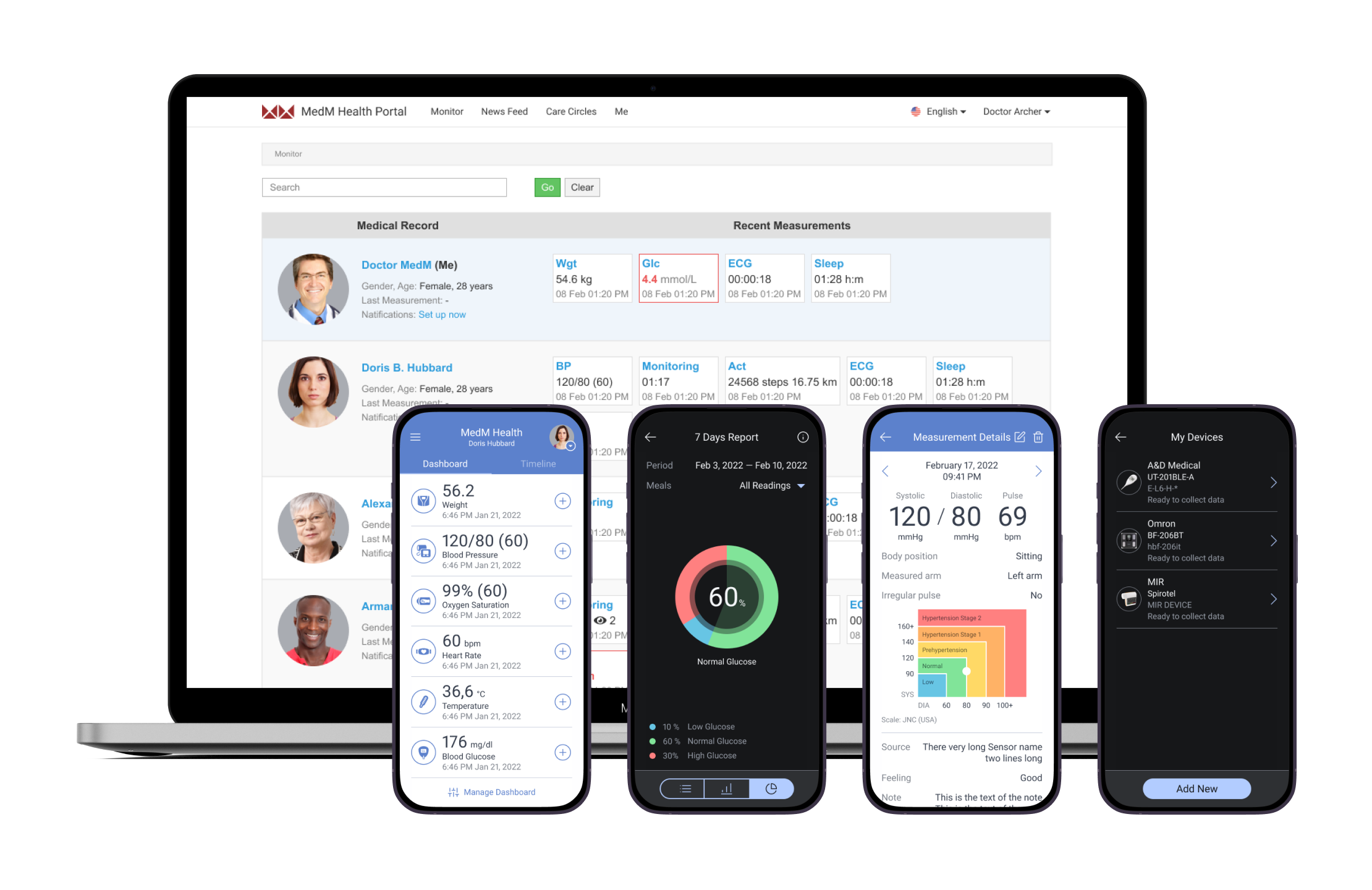Cutting-edge RPM Software: Revolutionizing Patient Monitoring in Healthcare
Cutting-edge RPM Software: Revolutionizing Patient Monitoring in Healthcare
Blog Article
Discover the Power of Remote Patient Keeping Track Of Innovation

Benefits of Remote Patient Tracking
What are the vital advantages of using remote person monitoring innovation in medical care settings? Remote individual surveillance innovation offers countless advantages that can dramatically enhance individual results and health care efficiency.
Moreover, remote patient tracking improves person engagement and empowers individuals to take an active duty in managing their health. Individuals can obtain customized comments, education and learning, and support based upon their specific wellness data, causing better adherence to treatment strategies and boosted total health.

How Remote Monitoring Works
Remote surveillance innovation in health care entails the usage of electronic tools to accumulate and track person information from another location. These tools, such as wearable sensing units, mobile applications, and linked clinical tools, continuously keep an eye on vital indicators, signs, and other health indications. The gathered data is then transmitted securely to doctor in real-time or at set up periods.
The process of remote surveillance starts with the setup of the tracking device, which is customized to the particular health needs of the client. Clients are normally advised on exactly how to use the gadgets properly and are led on the regularity of information transmission. As the devices track various health metrics, they create useful insights that assist healthcare specialists assess the person's condition, discover any type of worrying trends, and make educated choices regarding their treatment plan.
Remote monitoring innovation operates via safe and secure data networks and cloud-based platforms, ensuring the discretion and stability of client info. This seamless circulation of data makes it possible for timely interventions, personalized care, and enhanced health and wellness end results for patients, especially those with chronic problems or in need of routine monitoring.
Improving Client Involvement
Offered the fundamental role that remote monitoring innovation plays in medical care, boosting patient engagement is paramount to optimizing the advantages of this cutting-edge technique to care. By actively entailing people in their own health and wellness monitoring, remote individual surveillance promotes a sense of empowerment and responsibility.
Moreover, remote client monitoring helps with normal interaction in between individuals and health care teams, allowing for prompt interventions and customized care strategies. Involving people with educational sources, customized responses, and interactive tools further encourages them to comply with therapy procedures and take on much healthier lifestyle choices. Inevitably, by advertising individual interaction, remote tracking innovation improves the quality of treatment, boosts wellness end results, and enhances the patient-provider connection in a vibrant and patient-centered manner.
Enhancing Healthcare Efficiency
Efficient healthcare delivery rests on the seamless combination of remote patient tracking innovation with existing care systems and operations. By incorporating remote client surveillance devices, healthcare carriers can enhance processes, maximize resource appropriation, and boost general effectiveness in delivering treatment.
One key aspect where remote client monitoring innovation boosts performance is in decreasing unneeded hospital check outs. With real-time surveillance of person vitals and symptoms from their homes, doctor can interfere proactively, preventing problems and minimizing the burden on emergency departments. Furthermore, remote tracking enables early discovery of health degeneration, making it possible for about his timely interventions and protecting against medical facility readmissions.
In addition, remote patient surveillance modern technology makes it possible for constant information collection, bring about more customized and targeted treatment plans. This data-driven technique assists healthcare specialists make notified choices, prioritize risky individuals, and assign resources successfully. By integrating remote surveillance innovation into existing medical care systems, suppliers can enhance client outcomes, boost functional performance, and inevitably, provide better care.
Future Trends in Remote Tracking

One more essential trend is the development of wearable tools and sensing units for constant health and wellness tracking. Wearables like smartwatches, fitness trackers, and medical-grade devices can track crucial signs, task levels, and drug adherence, offering a comprehensive image of a person's wellness outside conventional medical setups.
In addition, the adoption of telehealth solutions is predicted to increase, assisting in remote assessments, tracking, and follow-ups. Telehealth not only improves accessibility to look after patients in remote areas but likewise hop over to these guys minimizes medical care prices and improves overall individual end results. As these trends continue to develop, remote person monitoring is readied to play a pivotal function in the future of medical care shipment, advertising proactive, customized, and effective person care.
Verdict
In final thought, remote individual surveillance you could try these out modern technology offers numerous advantages such as better patient engagement, enhanced healthcare efficiency, and potential for future trends in healthcare. This technology permits continuous monitoring of patients outside of traditional health care settings, bring about better health outcomes and reduced health care expenses - remote patient monitoring software. As remote tracking continues to develop, it has the prospective to transform the means medical care is supplied and improve the general top quality of individual care
Remote patient tracking modern technology supplies countless benefits that can considerably enhance individual results and health care effectiveness. By proactively including individuals in their own wellness administration, remote patient surveillance promotes a sense of empowerment and obligation.Moreover, remote individual surveillance assists in regular interaction in between clients and medical care teams, enabling for punctual interventions and customized treatment plans. As these fads continue to develop, remote person tracking is established to play a critical role in the future of health care distribution, promoting positive, customized, and reliable individual care.
In verdict, remote individual monitoring technology uses many benefits such as better person engagement, boosted medical care effectiveness, and capacity for future patterns in healthcare.
Report this page